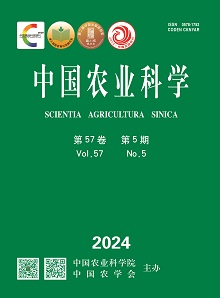【Objective】Under the traditional nitrogen (N) fertilizer application technology in Huang-Huai-Hai Plain, insufficient soil N supply in the late growth stages of the wheat-maize double cropping system has resulted in significant yield reduction issues. In this study, the effects of N fertilizer reduction and postponing on plant photosynthetic physiological characteristics, aboveground dry matter accumulation, annual grain yield, and economic benefits were investigated, in order to provide the theoretical basis for further optimization of N fertilizer management.【Method】From 2020 to 2023, the field experiment was conducted in the typical wheat-maize double cropping system in Huang-Huai-Hai Plain. The following treatments are set up in the experiment: annual N fertilizer application 400 kg·hm-2of traditional farmer treatment (CK, wheat season 200 kg·hm-2: 65% basal fertilizer+35% regreening fertilizer, maize season 200 kg·hm-2: 100% basal fertilizer), 10% reduction of annual N fertilizer (SN, wheat season 180 kg·hm-2: 50% basal fertilizer+50% regreening fertilizer, maize season 180 kg·hm-2: 100% basal fertilizer), 20% reduction of annual N fertilizer (NH, wheat season 180 kg·hm-2: 22.2% basal fertilizer+33.3% regreening fertilizer+44.5% heading fertilizer, maize season 140 kg·hm-2: 28.6% basal fertilizer+71.4% pre-tasseling fertilizer), and 30% reduction of annual N fertilizer (NL, wheat season 140 kg·hm-2: 43% regreening fertilizer+57% heading fertilizer, maize season 140 kg·hm-2: 100% pre-tasseling fertilizer). The photosynthetic physiological characteristic, grain yield, and economic benefits of the wheat-maize double cropping system were tested. 【Result】Under the condition of N reduction, the photosynthetic physiological characteristic of crops were optimized by N fertilizer postponing. Averaged across the three years, NL significantly increased leaf area index by 19.0%-40.1% and 21.6%-36.7% at jointing and anthesis of winter wheat, respectively, compared with CK, SN, and NH treatments. Meanwhile, NL was 6.8%-7.3% higher at silking of summer maize than CK and SN. Similarity, for winter wheat, averaged across the three years, NL significantly increased SPAD value by 7.7%-10.0% and 7.4%-12.9% at jointing and anthesis, respectively, compared with CK and SN. Additionally, it showed a 5.2%-16.2% increase at mid-filling compared with CK, SN, and NH, respectively. Meanwhile NL and NH were 9.0%-9.4% and 6.7%-7.1% higher at pre-tasseling of summer maize, respectively, compared with CK and SN, and 5.1%-9.4% and 4.1%-9.2%at silking and mid-filling under NL treatment, respectively, compared with CK, SN, and NH. Averaged across the three years, NL significantly increased Pn by 8.9%-13.3%, 14.0%-18.1%, and 20.1%-24.4% at jointing, anthesis, and mid-filling of winter wheat, respectively, compared with CK and SN. Meanwhile NL was 4.2%-5.7%, 8.7%-13.4%, and 7.7%-12.8% higher at pre-tasseling, silking, and mid-filling, respectively, compared with CK, SN, and NH, respectively. NL treatment improved the aboveground dry matter accumulation rate and stabilized or increased the aboveground dry matter accumulation at different growth stages by N fertilizer postponing. Average across the three years, the aboveground dry matter under NL significantly increased by 26.7%, 27.4%, and 18.1% at jointing, anthesis, and maturity of winter wheat, respectively, compared with CK. Additionally, there was a 14.4% increase in dry matter accumulation at silking of summer maize under NL compared with CK. N fertilizer postponing improved the photosynthetic physiological characteristics and promoted aboveground dry matter accumulation at each growth stage under the condition of N reduction, and increased winter wheat, summer maize, and annual grain yield and economic benefits. Compared with CK, the results averaged from 2020 to 2023 showed that NL treatment significantly increased the grain yield and economic benefits by 20.5%, 18.1%, 19.1% and 32.4%, 23.8%, 27.9%, respectively.【Conclusion】In the wheat-maize double cropping system on Huang-Huai-Hai Plain, a 30% reduction of annual N fertilizer by N fertilizer postponing could optimize crops photosynthetic physiological characteristics (such as leaf area index, leaf SPAD value, and Pn), as well as enhance aboveground dry matter accumulation rate, and aboveground dry matter accumulation at different growth stages. This would ultimately lead to improved winter wheat, summer maize, and annual grain yield, resulting in enhanced economic benefits.









